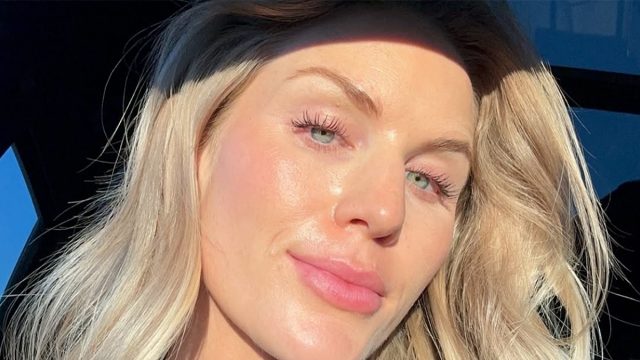Nutritionist Fixed Her Gut Health and Lost Weight With These 8 Simple Changes
Are your hormones keeping you from losing weight? Micaela Riley is a functional nutritionist and "Health Problem Solver." She is Board Certified FDN-P, BS, CPT, CHN, and regularly shares how she lost weight, balanced her hormones, and healed her gut by evolving her approach to diet and fitness. In a recent Instagram post, she reveals her secrets. "My physique finally changed when I did this," she wrote across the Instagram video. "Here's what I did to not only change my body but also balance my hormones, heal my gut, and reverse hypothyroidism, Hashimoto's & PCOS."
She Swapped HIIT Cardio for Walking
First, she shifted her approach to exercise. "Stopped high-intensity cardio," she writes in her post. "Switched to daily walks for sustainable movement without stress on my body."
RELATED: 3 Daily Habits That Actually Target Stubborn Belly Fat, Expert Reveals
She Prioritized R & R
Prioritized recovery and rest: Rest days became essential, helping me manage stress and improve results.
She Reverse Dieting
Instead of dieting, Micaela started practicing reverse dieting. "Boosted my metabolism by slowly increasing calories instead of constant restriction," she writes.
She Stopped Overtracking
Micaela used to track everything, but once she stopped, the game changed. "Ditched the Apple Watch," she says. "Freed myself from the constant pressure to 'burn calories' and tuned into what my body actually needed."
RELATED: 7 Surprising Dehydration Warnings A Doctor Never Ignores
She Strength Trained
She also started lifting weight and doing some other workouts. "Focused on strength," she says. "Strength training 4x/week plus Pilates 1x/week made a huge difference in building muscle and improving tone."
She Followed a Gluten-Free Diet
She also stayed away from processed carbohydrates. "Followed a gluten-free diet," she writes. "Nourished my thyroid and gut health with the right foods, keeping inflammation down."
She Took Supplements
She also relied on supplements, "with targeted support," she writes. "Added iodine, thyroid glandulars, colostrum, probiotics, and inositol to support healing and hormone balance."
She Took a Functional Medicine Approach
Lastly, she relied on a functional medicine approach. "Balanced hormones, healed chronic gut issues with a 5R protocol, and reversed hypothyroidism by addressing root causes," she says.
RELATED: Mom of 4 Lost 55 Pounds on Semaglutide "Now I Finally See Myself in the Mirror"
Her Gut Health Improved
The bottom line? She was able to heal her gut by keeping her hormones balanced, and that helped her lose weight. "These changes were game changers because stress, gut imbalances, and thyroid issues can all make it so hard to see results in the gym and can lead to weight gain," she writes. And if you enjoyed this article, take advantage of these 15 Quick Ways to Lose Body Fat Percentage in a Week.





